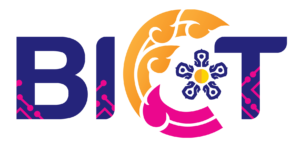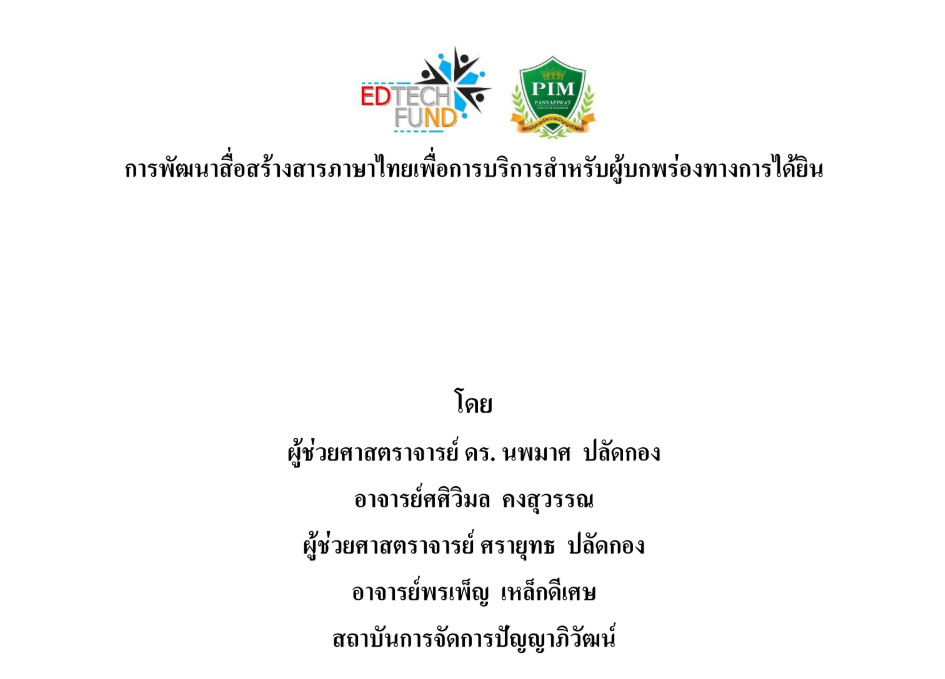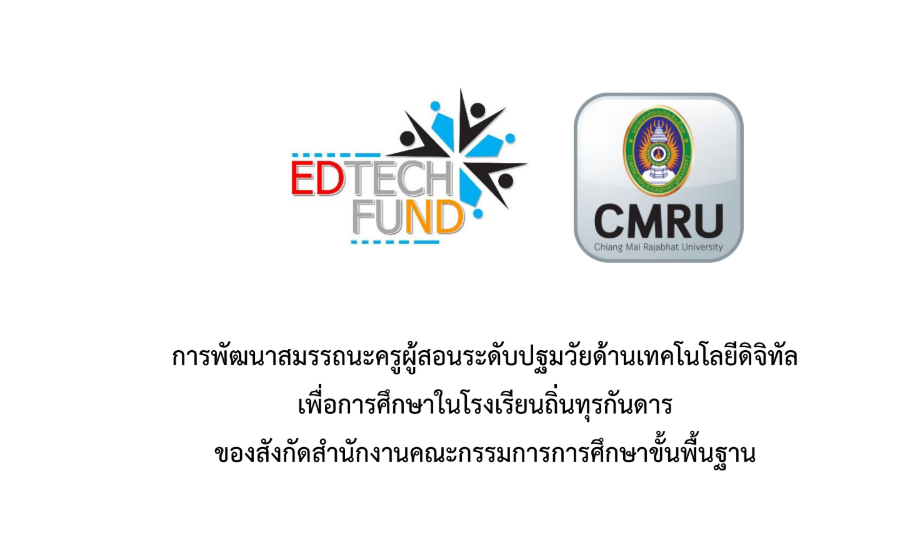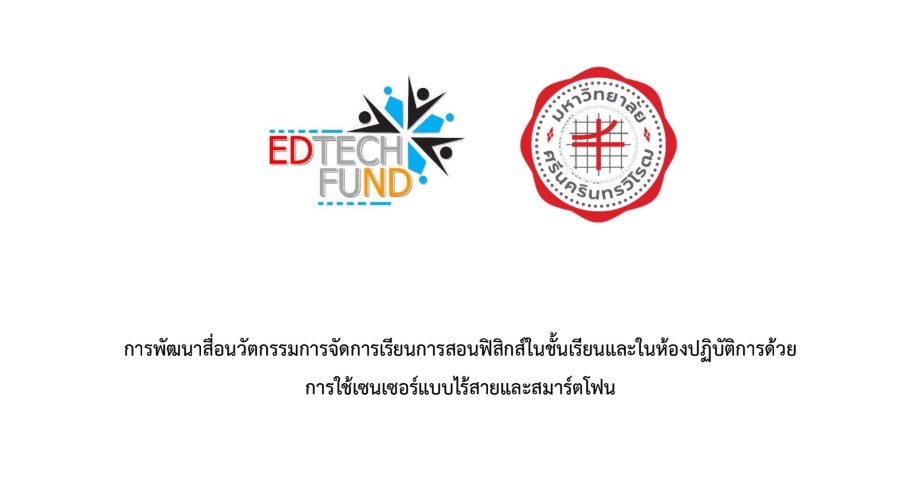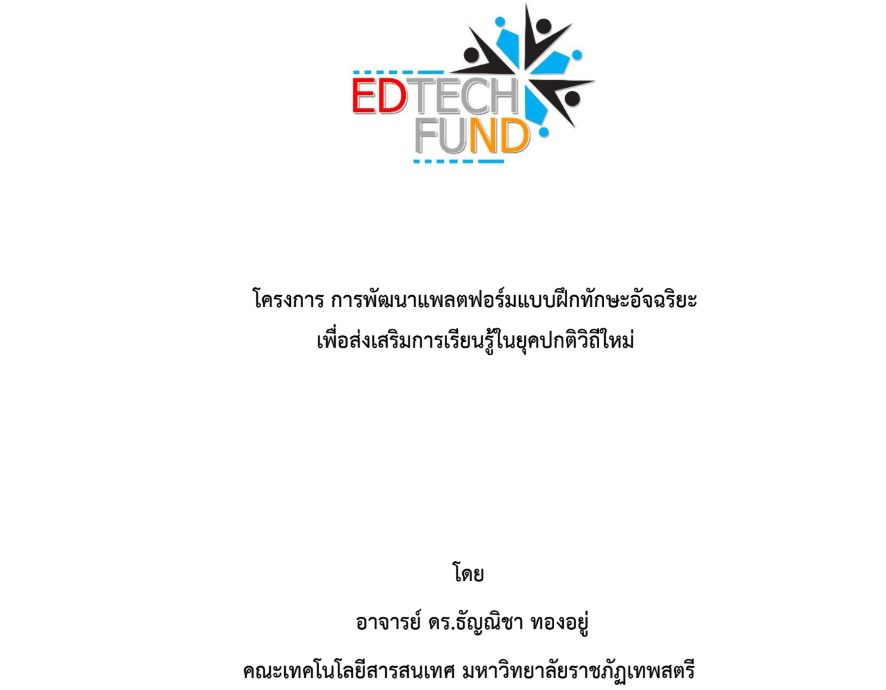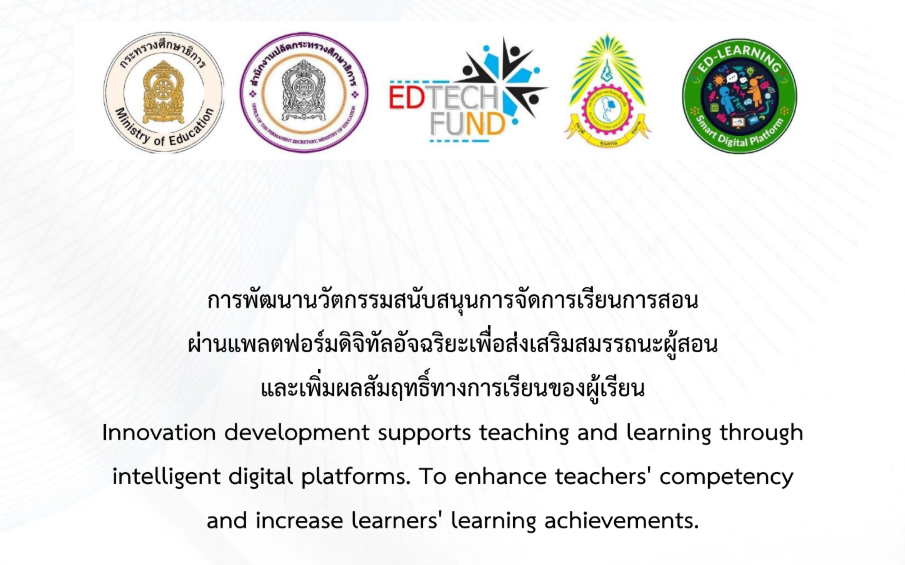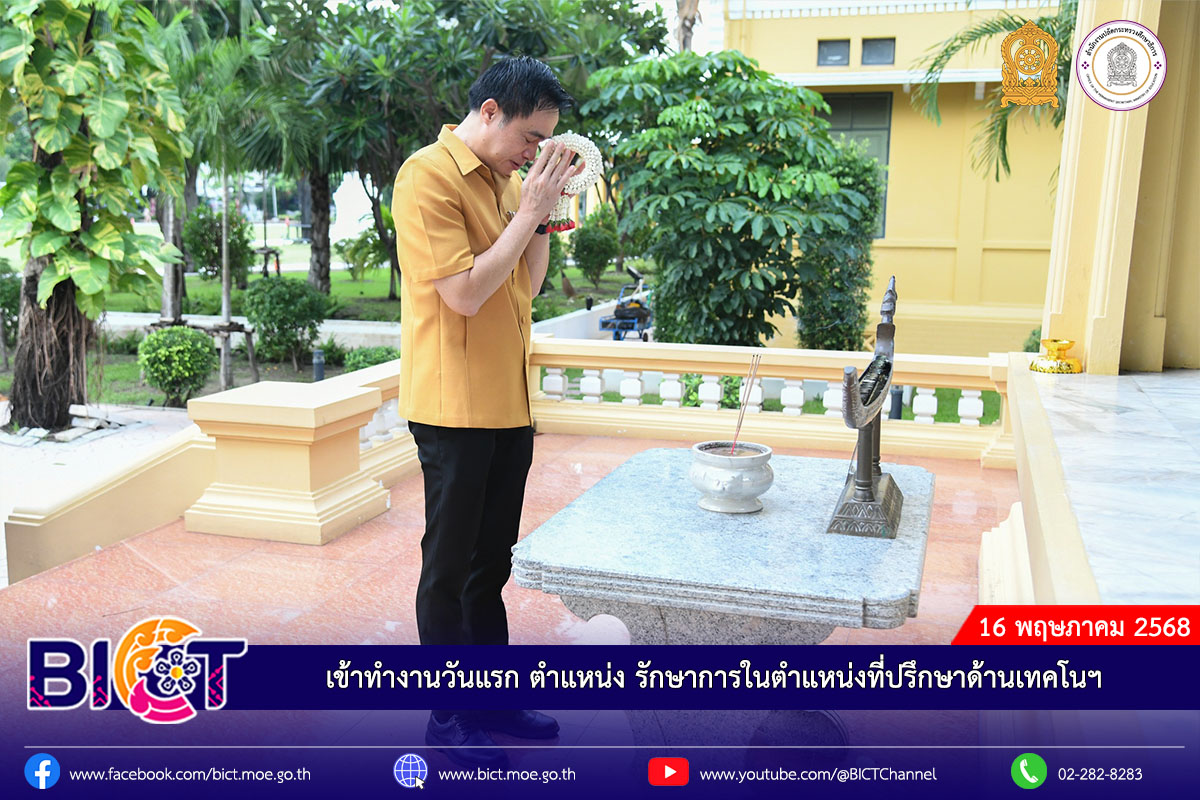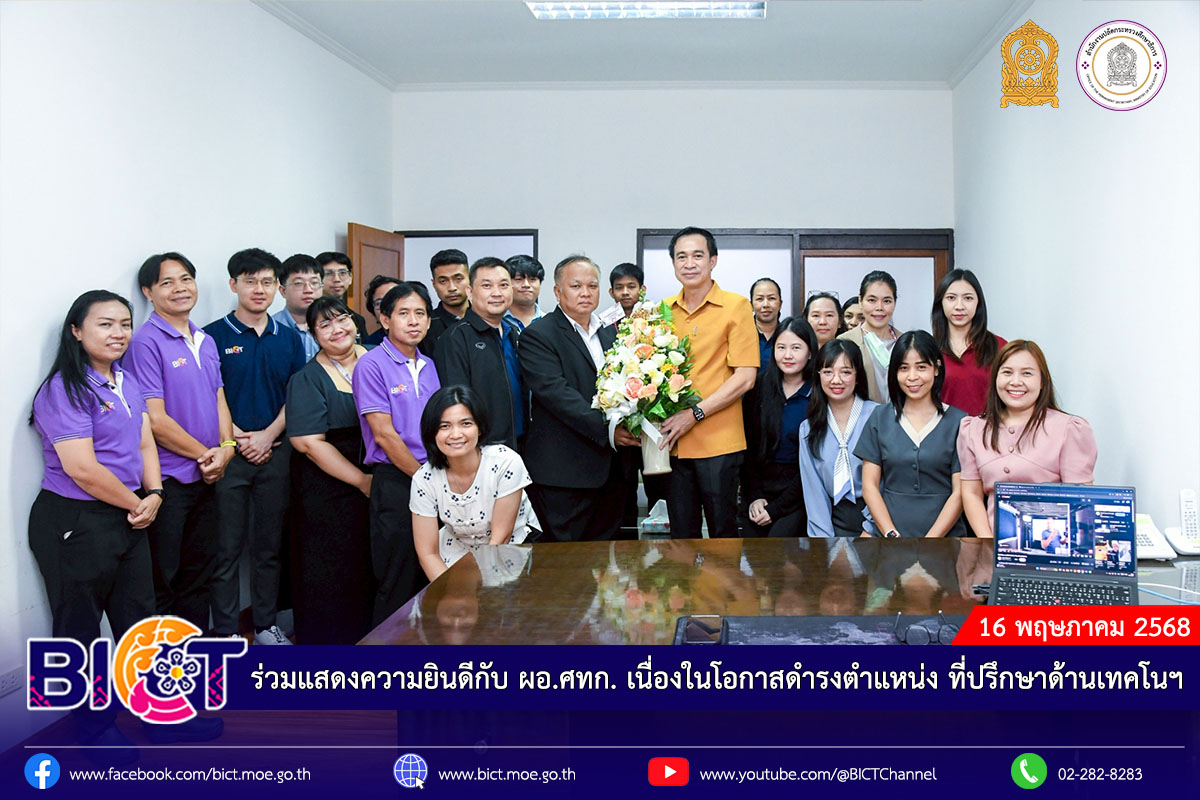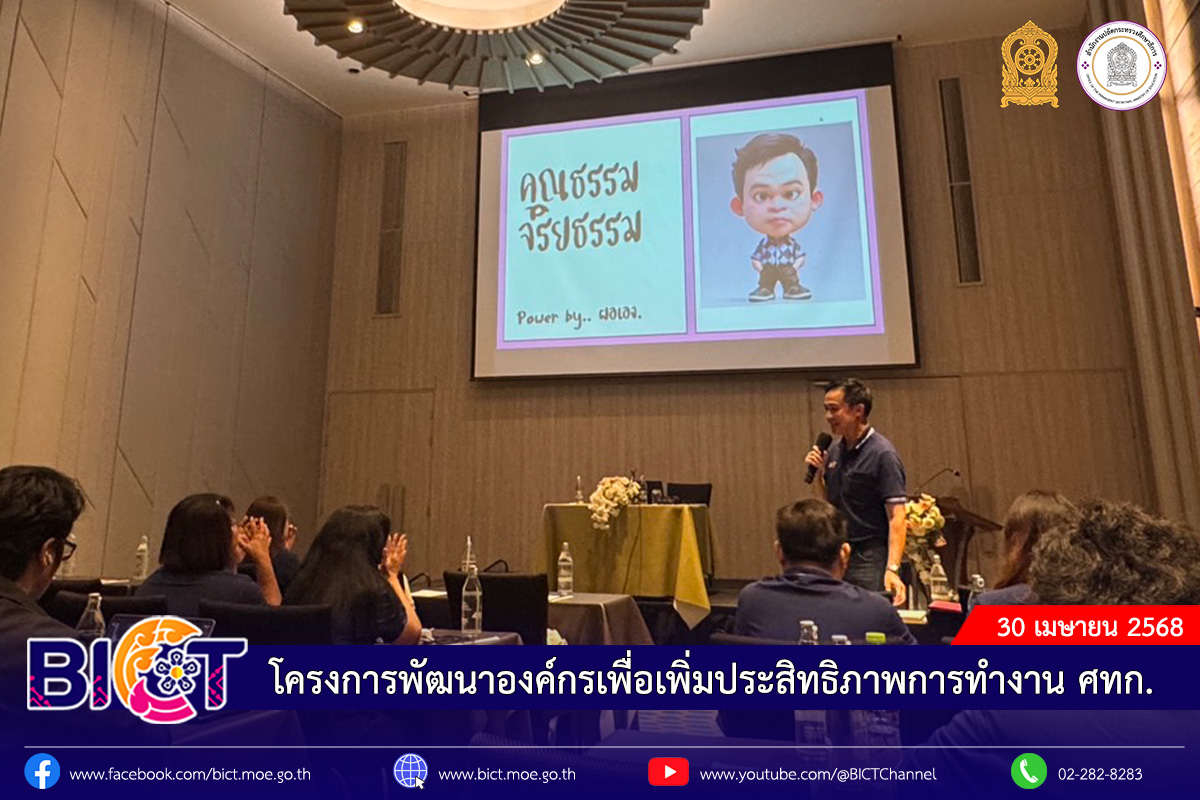โครงการพัฒนานวัตกรรมเทคโนโลยีล่ามภาษามือสามมิติในสื่อบทเรียนออนไลน์ของนักเรียน ที่บกพร่องทางการได้ยิน
17
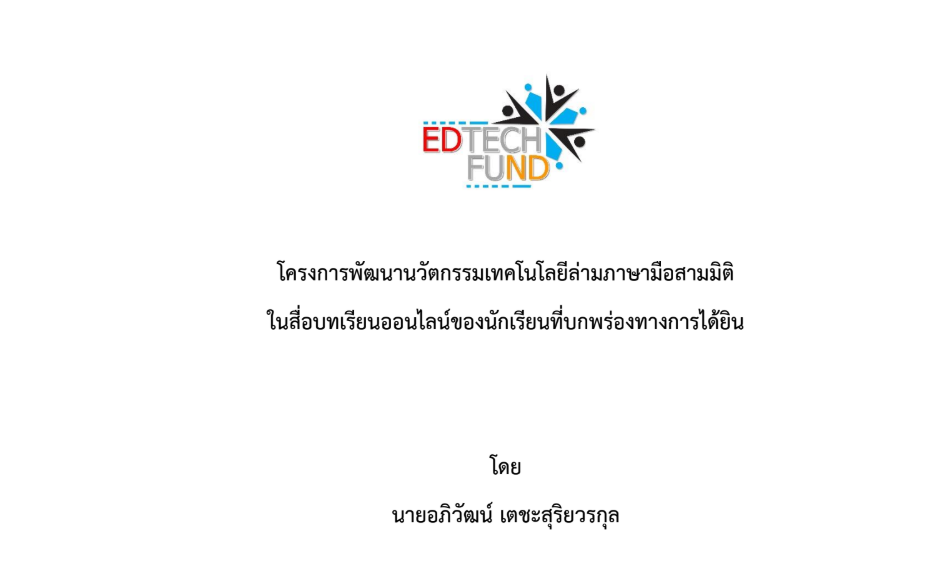
เลขที่สัญญา 5/2565
| Other Title: | โครงการพัฒนานวัตกรรมเทคโนโลยีล่ามภาษามือสามมิติในสื่อบทเรียนออนไลน์ของนักเรียนที่บกพร่องทางการได้ยิน |
| Author: | อภิวัฒน์ เตชะสุริยวรกุล |
| Date: | 2022 |
| Publisher: | กองทุนพัฒนาเทคโนโลยีเพื่อการศึกษา กระทรวงศึกษาธิการ |
| Abstract: | งานวิจัยในโครงการพัฒนานวัตกรรมเทคโนโลยีล่ามภาษามือสามมิติในสื่อบทเรียนออนไลน์ของนักเรียนที่บกพร่องทางการได้ยิน มีวัตถุประสงค์เพื่อศึกษาเปรียบเทียบผลการเรียนบทเรียนออนไลน์โดยใช้ล่ามภาษามือที่เป็นบุคคลกับล่ามภาษามือสามมิติ ที่ใช้เทคโนโลยี Inertial Sensor Modules และวัดความพึงพอใจของนักเรียนที่มีความบกพร่องทางการได้ยินต่อการใช้ล่ามภาษามือสามมิติในบทเรียนออนไลน์จากผลการศึกษาวิจัยพบว่า 1. การเปรียบเทียบผลการเรียนของนักเรียนทั้งสองกลุ่มผ่านแบบทดสอบก่อนและหลังบทเรียนออนไลน์ผลคะแนนสอบจากการใช้ล่ามสามมิติ พบว่าค่าเฉลี่ย คะแนนสอบหลังเรียน มากกว่าคะแนนสอบก่อนเรียน ผลคะแนนสอบจากการใช้บุคคลจริงเป็นล่าม พบว่าค่าเฉลี่ย คะแนนสอบหลังเรียน น้อยกว่าคะแนนสอบก่อนเรียน 2. การเปรียบเทียบผลการเรียนของนักเรียนในกลุ่มเดียวกัน โดยใช้สถิติ Wilcoxon Signed Rank Test พบว่า ผลสัมฤทธิ์ทางการเรียนของนักเรียน จากการใช้ล่ามภาษามือบุคคลไม่แตกต่าง และผลการเรียนรู้ของนักเรียน จากการใช้ล่ามภาษามือสามมิติแตกต่าง โดยมีคะแนนสูงขึ้น อย่างไม่มีนัยสำคัญทางสถิติ 3. การเปรียบเทียบผลการเรียนของนักเรียนระหว่างกลุ่ม กลุ่ม โดยใช้สถิติ Mann-Whitney พบว่า ค่ากลางของคะแนนก่อนเรียนของนักเรียนกลุ่มที่ใช้ล่ามภาษามือบุคคลกับล่ามภาษามือสามมิติแตกต่างกัน แต่ไม่มีนัยสำคัญทางสถิติ 4. ผลที่ได้จากการประเมินความพึงพอใจพบว่า ผู้ตอบแบบสอบถาม มีความพึงพอใจต่อล่ามบุคคลมากกว่าล่ามที่เป็นสามมิติในทุกประเด็น ยกเว้น ประเด็นการแสดงภาษามือได้ชัดเจน เข้าใจง่าย ที่ความพึงพอใจของของล่ามสามมิติมากกว่าล่ามบุคคล คำหลัก : ล่ามภาษามือบุคคล ล่ามภาษามือสามมิติ สื่อบทเรียนออนไลน์ มนุษย์เสมือนจริง นักเรียนที่บกพร่องทางการได้ยิน The research project on the development of a three-dimensional sign language metahuman technology in online learning media for hearing-impaired students aimed to study and compare the learning outcomes of online lessons using a human sign language interpreter and a three-dimensional sign language metahuman that used Inertial Sensor Modules technology and to measure the satisfaction of hearing-impaired students towards the use of a three-dimensional sign language metahuman in online lessons. The research findings were as follows: 1. Comparing the learning outcomes of both groups of students through pre-tests and post-tests, the scores from using the three-dimensional metahuman showed that the average post-test score was higher than the pre-test score. The scores from using a real person as an interpreter showed that the average post-test score was lower than the pre-test score. 2. Comparing the learning outcomes of students in the same group using Wilcoxon Signed Rank Test, it was found that the learning outcomes of students from using a human interpreter did not differ and the learning outcomes of students from using a three-dimensional metahuman differed with higher scores, but not statistically significant. 3. Comparing the learning outcomes of students between groups using Mann-Whitney statistics, it was found that the median of the pre-test scores of the students in the group that used a human interpreter and the group that used a three-dimensional metahuman differed, but not statistically significant. 4. The results from the satisfaction evaluation showed that the respondents had more satisfaction towards the human interpreter than the three-dimensional avatar in every aspect, except for the aspect of clear and easy-to-understand sign language expression, which the satisfaction of the three-dimensional metahuman was higher than the human interpreter. Keywords : Sign language interpreter, Three-dimensional sign language interpreter, Online lesson media, Metahuman, Hearing impaired students |
| เจ้าของลิขสิทธิ์: | กองทุนพัฒนาเทคโนโลยีเพื่อการศึกษา กระทรวงศึกษาธิการ |
| ดู/เปิด: |
ข่าวสารที่เกี่ยวข้อง
การพัฒนาสื่อสร้างสารภาษาไทยเพื่อการบริการสำหรับผู้บกพร่องทางการได้ยิน
17 มีนาคม 2568
21
ครั้ง
การพัฒนาแพลตฟอร์มแบบฝึกทักษะอัจฉริยะเพื่อส่งเสริมการเรียนรู้ในยุคปกติวิถีใหม่
17 มีนาคม 2568
20
ครั้ง
ข่าวสารล่าสุด
ร่วมแสดงความยินดีกับ ผอ.ศทก. เนื่องในโอกาสดำรงตำแหน่ง ที่ปรึกษาด้านเทคโนฯ
16 พฤษภาคม 2568
15
ครั้ง
ข้อมูลเชิงสถิติเรื่องร้องเรียนการทุจริตและประพฤติมิชอบประจำปี 2567
13 พฤษภาคม 2568
18
ครั้ง
ข้อมูลสถิติเชิงให้บริการ 2567
13 พฤษภาคม 2568
19
ครั้ง
โครงการพัฒนาองค์กรเพื่อเพิ่มประสิทธิภาพการทำงาน ศทก.
30 เมษายน 2568
33
ครั้ง
